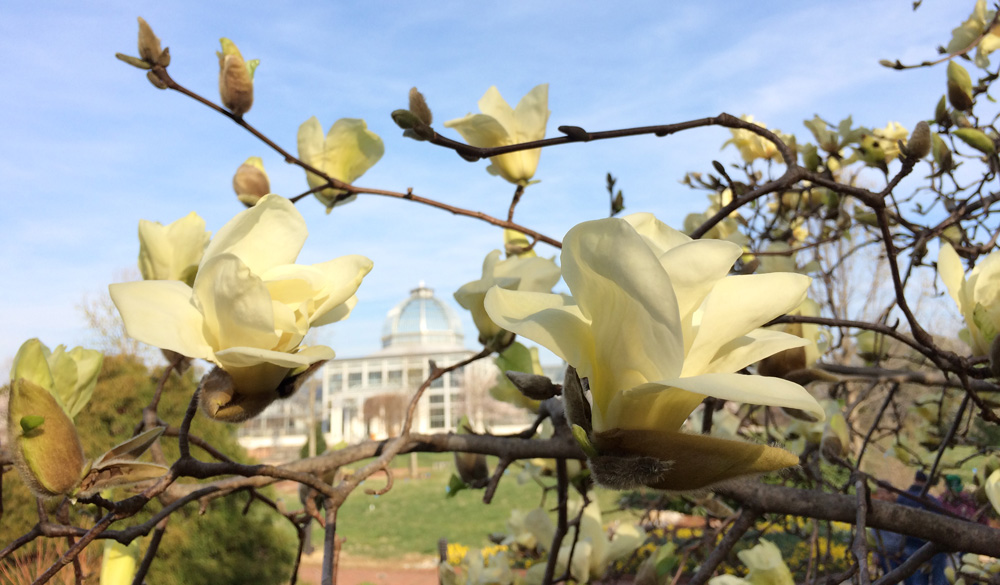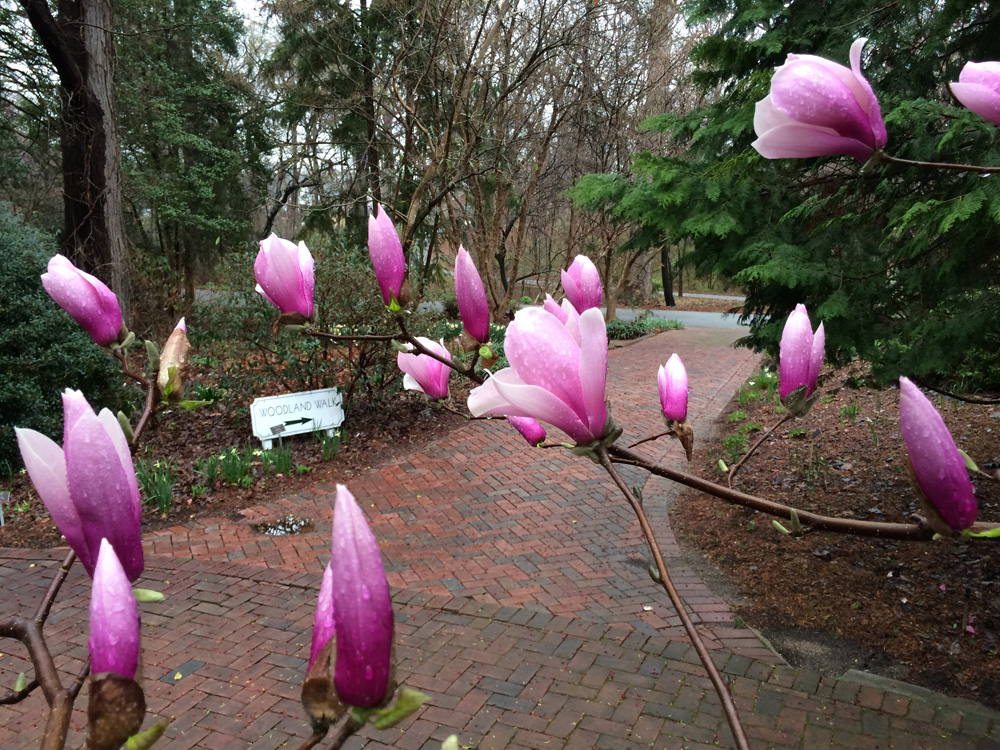How to Pick a Perfect Tree

Magnolia x ‘Sundance’ is one of many trees that guests discover at Lewis Ginter Botanical Garden and are inspired to plant in their home garden.
Joel Koci knows a good tree when he sees it. He’s a tree guy. A highly respected local arborist and Virginia Forestry Extension Associate at Virginia State University. Koci visited the Garden recently for the Getting to Big Trees: Practices for Life Stages symposium. And, because its springtime when our thoughts turn to planting something new, he shared these tips to help you choose a healthy tree of your own:
- Location, location, location. Koci’s most important advice: “aesthetics go last.” It’s easy to fall for a tree’s autumn foliage or surrender to the charm of its early spring bloom. But instead of succumbing to love at first sight, he recommends a more discerning approach to arboreal matchmaking. “Choose the right tree for the right site,” he advises. “Soil composition in your garden, water availability, temperature, light requirements, mature size and a tree’s resistance to pests are much more dependable measures of its suitability to the micro-culture of your landscape.” The Virginia Native Plant Finder is an online resource that can help you match your tree to local growing conditions.
- Go native. Choose a plant that is native to your area. Native plants are acclimated to local growing conditions like soil composition and water availability. They also have built-in resistance to pests and disease that are common to your area. And they’re more likely to delight local pollinators.
- Get to the bottom of it. Most plant problems originate in the root system. “Pull the plant out of its container and take a look,” Koci recommends. “Healthy roots are white or manila colored, never dark or black. Look for moist soil and numerous small roots. If you see larger, stiff roots encircling the inside of the pot, beware. They can become stem girdling roots and may lead to failure of the tree.”
- Aged out. If you see roots coming out of the bottom of the pot, the soil looks dull and lifeless and there are weeds competing for space in the container, move on. These are all signs that the tree has been in the nursery for more than 12 months and is likely pot-bound. Not a good choice.
- Size matters. Speaking of roots, make sure the size of the root ball is appropriate to the size of the tree you are considering. Measure the diameter (caliper) of the trunk at a spot 4 inches above ground level. Ideally, for every 1 inch in trunk diameter a tree should have 12 inches of root ball diameter.
- Follow the leader. A tree with a strong, well-developed, single “leader” (main trunk) is preferable to one that has branched into two or three co-dominant trunks. The structural integrity of a single leader will help make your tree resistant to wind and storm damage as it grows.
- Coming up for air. The collar of a tree (where the rough bark meets the smoother surface of the root system,) should be at grade level, not buried below the soil line or covered with mulch, which would compromise the tree’s ability to process nutrients.
- Beauty is in the eye of the beholder. Choose a tree with bright, healthy bark that is free from wounds or blemishes. Avoid specimens with visible insect damage, mechanical injury or dead wood. Beauty in a tree is a sign of wellbeing.
- Form follows function. Look for branches that are well distributed around the trunk of the tree and spaced about 8 to 12 inches apart with wide-angle crotches. Good trunk taper is also essential because it provides a strong foundation at the base of the tree and flexibility near the top, where the canopy needs to flex in the wind.
- Variety is the spice of life. Plant a variety of different tree species in your landscape, and take into account what other trees are growing nearby in your neighborhood. By creating an intentional diversity you can help limit the spread of intra-species insect and disease problems.

Magnolia × soulangeana, like this one blooming in Flagler Perennial Garden, is a tried and true favorite in many Central Virginia gardens.
Garden Explorer at Lewis Ginter Botanical Garden can be a valuable part of your tree research. A simple online search will tell you if the tree you are considering is part of our collection, and if it is, pinpoint its location in the Garden so you can see it in person. Notice where the tree is planted and see if the conditions match the spot where you plan to plant it at your site. Questions? Consult our Hort Helpline by calling 262-9887, x332, or email [email protected].
A soil test is also a good idea. Soil sample test kits are available at your county library or your local Virginia Cooperative Extension Service office. In Virginia, soil samples are sent to the Virginia Tech Soil Testing Lab to be analyzed. Results are mailed from the lab within 3 working days and include recommendations for correcting any imbalance revealed by the test.
Now you’re ready. Come to PlantFest at Lewis Ginter Botanical Garden on Mother’s Day weekend (May 6-7, 2016,) enjoy plant vendors, vendor demonstrations, music, food and beverages, meet your Virginia Cooperative Extension agent as well as arborist Joel Koci, ask any gardening questions you may have and then take home the tree of your dreams!
